Cassava
Manihot esculenta
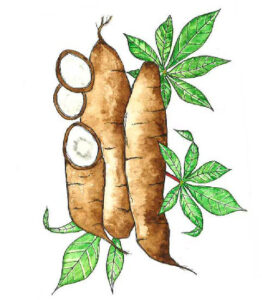
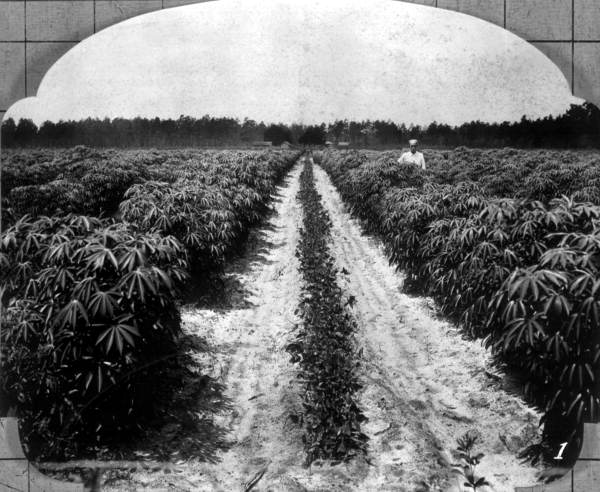
!['A boy uses a long-handled implement to smooth a gigantic vat of manioc flour in a quilombo, or a community of descendants of formerly enslaved people, at Curiaú, Macapá, Amapá, Brazil. .Library of Congress, Prints & Photographs Division, © Andre Cypriano, [Reproduction number e.g., LC-DIG-ppmsca-123456].](https://floridaheritagefoods.com/wp-content/uploads/2022/08/cultural_cassava.jpg)
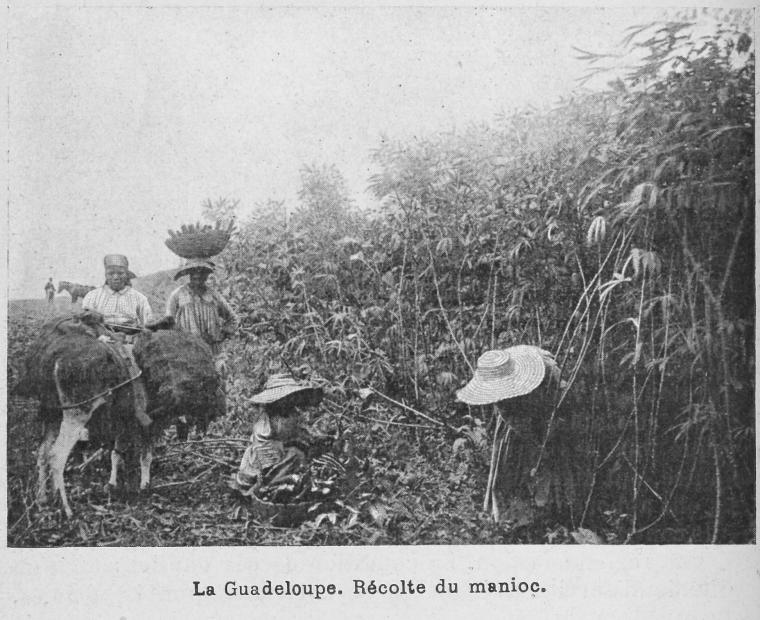
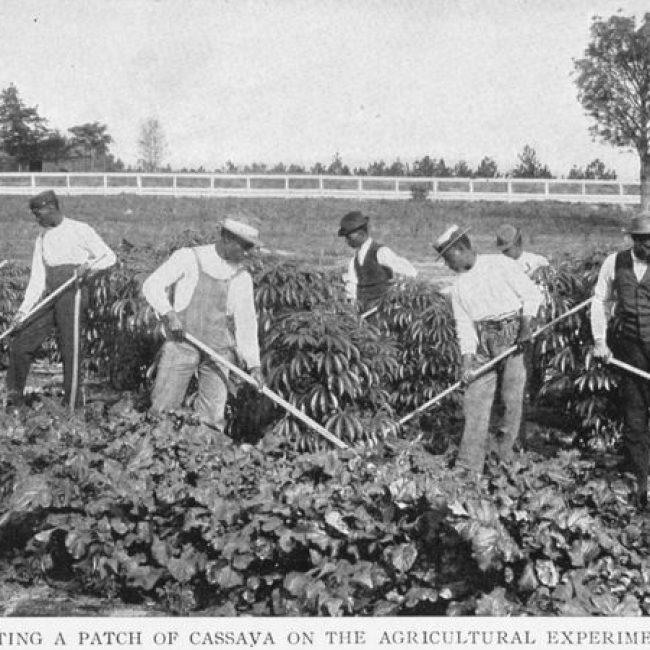

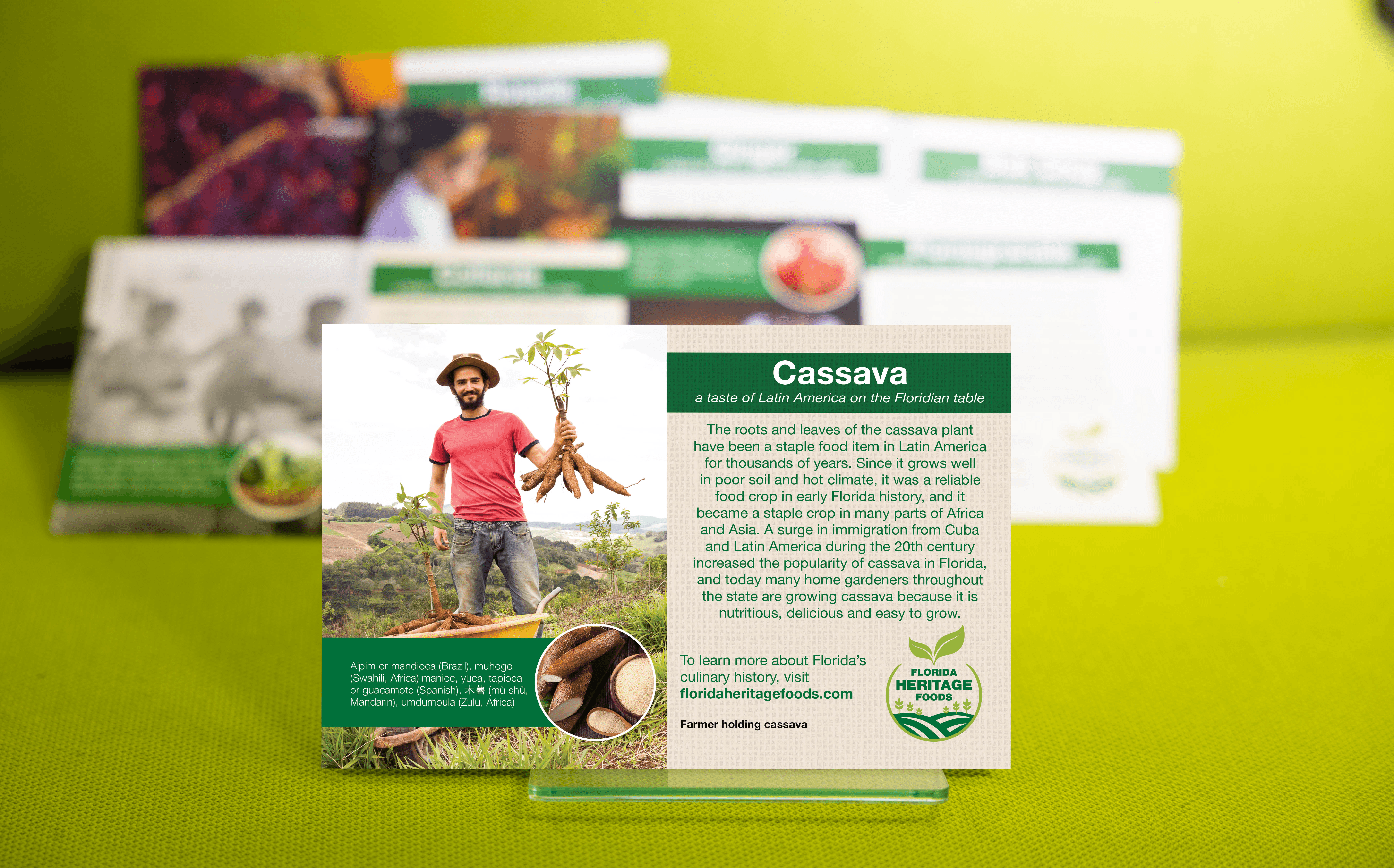

Plant stalks and roots, vertically or horizontally, in the summer months, April to June. Space approximately one foot apart. It is important to water often, yet the soil must be well-drained to avoid rotting the root. Fertilizer will boost growth, and the plant can reach 20 feet high. The roots can grow long and thick, and some may take up to 11 months to fully mature. Leaves can be harvested as needed. Roots are not well-suited for storage and should be used relatively fresh. The stalk and stem are frost sensitive. Cuttings for propagation should be harvested before the first frost. Roots left in the ground over winter will likely send out new stalks in the spring. To plan a heritage garden, download the ‘Planning a Florida Heritage Garden (PDF).’
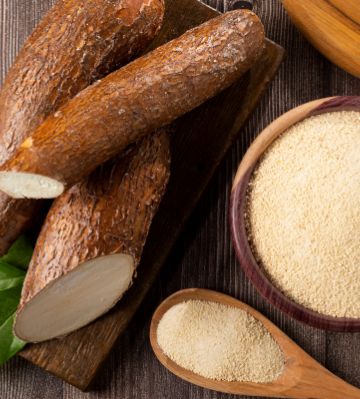
Santa Fe College Partnered with Multiple Organizations in a Collaborative Effort to Bring Awareness of the Heritage Plants In Florida.
BY CULTURAL HISTORY
BY GROWING SEASON
DROUGHT TOLERANT PLANTS
Commitment to Equal Access and Equal Opportunity
Santa Fe College is committed to an environment that embraces diversity, respects the rights of all individuals, is open and accessible, and is free of harassment and discrimination. For more information, visit sfcollege.edu/eaeo or contact equity.officer@sfcollege.edu.
SACSCOC Accreditation Statement
Santa Fe College is accredited by the Southern Association of Colleges and Schools Commission on Colleges (SACSCOC). For more information, visit sfcollege.edu/sacscoc.
